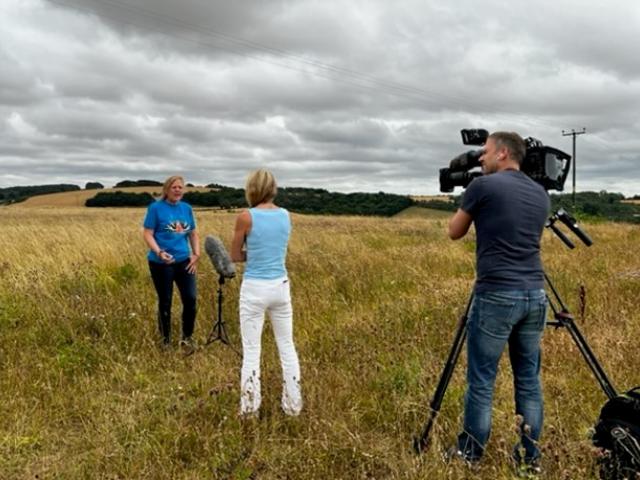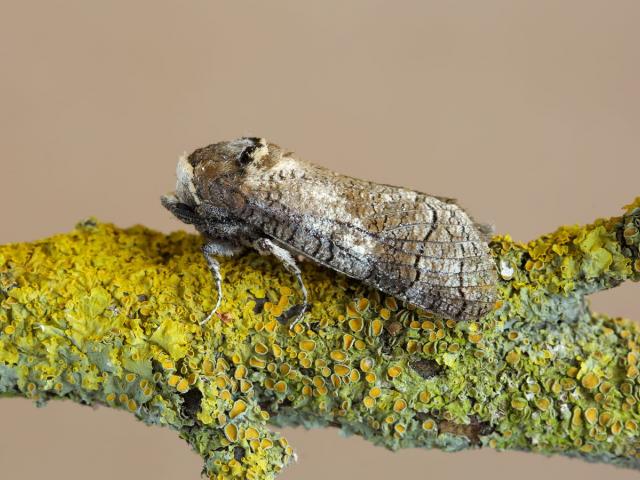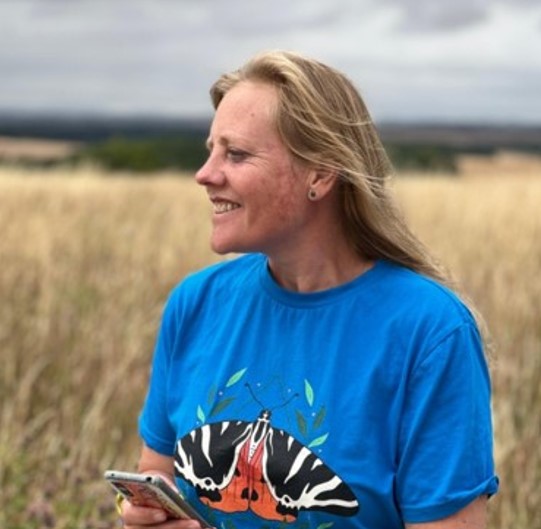In this article, we get to know Zoë Randle, Senior Surveys Officer, and explore her role in Big Butterfly Count as well as her passion for moths and butterflies.
Please tell us about your role at Butterfly Conservation
I’m the Senior Surveys Officer at Butterfly Conservation and my job is to coordinate the National Moth Recording Scheme (NMRS) and the Butterflies for the New Millennium (BNM) recording scheme and what that entails in supporting the County Recorder networks. There are thousands of people out there who count butterflies and moths in their gardens or throughout the countryside. The role of the County Recorder is to collate all of those local butterfly and moth records, check them for their accuracy, and then submit them up to the NMRS or BNM. So, they are key volunteers and it’s my job to support them and the recording community around them.
Can you tell us about your role with Big Butterfly Count?
I’m also the ecological lead for Butterfly Conservation's Big Butterfly Count. I help and support the communication team with the ecological content about butterflies, and species information. I do refer to my colleague, Head of Science, Dr Richard Fox quite a lot because he’s a proper fount of all knowledge for all things butterflies, and he used to coordinate Big Butterfly Count so big shoes to fill there!

I help the communication team with angles for the press releases and I do many of the media interviews at the launch of the Count and then throughout the Count.
And then at the end, once all the data are in it’s my job to crunch the numbers, do some analysis of the data and then present those results to show what’s happened to the butterflies during the snapshot which is the Big Butterfly Count.
What is your favourite butterfly and moth?
My favourite butterfly is the Brimstone butterfly because I really love seeing that bright flash of greeny-yellow across my garden on a spring day. To me, it’s a real symbol of hope and gratitude - ‘Yes! I’ve made it through the winter!’. I’m not a great person for the winter, I don’t like the cold and the dark and the rain, so the first Brimstone butterfly I see is a real moment for me.
And my favourite moth has got to be the Elephant Hawk-moth because it’s pink and green and they are my two favourite colours, and they’ve got really fantastic caterpillars as well and, let’s face it, who can say that moths are boring and drab jumper-munching pests when you see the delight and the beauty of a cracking pink and green Elephant Hawk-moth?
What is it about butterflies and moths that you love?
Well, they’re beautiful and they’re important in the ecosystem. I think for me as well it’s what they symbolise. They start off as an egg and turn into a caterpillar and the caterpillar does lots of munching away and then it pupates and within that pupal caste is this chemical reaction happening and everything has turned into a sloppy sludge and then it’s reformed as the adult butterfly. And then it pops out, emerging from the chrysalis, and that is just really quite an amazing thing. Nature is awesome! Yeah, nature is just amazing that it can break down these caterpillars and then create something else. I mean humanity has done a lot of amazing things, but can we do that? Have we managed to replicate something quite so…it’s almost alchemic, isn’t it? Have we managed that? I don’t think so. So that’s what I love about them.
And then moths as well, everyone loves butterflies, but moths are the underdogs. They’re the creatures of the night that everyone’s frightened of but really, you’re missing a trick because they’re absolutely cracking.
Have you got any fun facts about butterflies and moths that you particularly like?
I like the fact that the Emperor Moth can detect the pheromones of a female from several miles away. For such a small creature this is quite a feat and is pretty snazzy!

Also, the fact that the Goat Moth spends so much of its time inside the trunk of a tree because the woody material that it’s eating hasn’t got much nutritional value, so it takes a long time for the caterpillar to get enough out of what it’s eating to grow into something big enough to then pupate into a Goat Moth…and the fact that Goat Moth caterpillars absolutely reek of goats!
I worked on the Large Blue butterfly for my PhD and I think the fact that the Large Blue butterfly, and a couple of other blues, have such an intimate relationship with ants is something quite special as well. The Large Blue caterpillars get discovered by ants and the ants stimulate the caterpillars to release sugary secretions which the ants are like ‘ooh this tastes nice’ and they also ‘think’ ‘this caterpillar smells like one of our ant grubs’ so they pick it up, take it to the nest, and then once the caterpillar is in the nest the caterpillar helps itself to the ants and munches its way through them and then emerges the following year. I think that the ant-butterfly relationship is just amazing.
Is there anything else you’d like to add?
Just how the National Moth Recording Scheme, the Butterflies for the New Millennium Recording Scheme, and also the Big Butterfly Count, couldn’t really run without the input of County Recorders, other volunteers, and the people getting out there counting butterflies and moths. We wouldn’t have all this great data which provides the evidence base for our science, without our fantastic volunteers and our supporters who all take part in our schemes. So, hats off to them for doing a fantastic job, we couldn’t do it without them!


